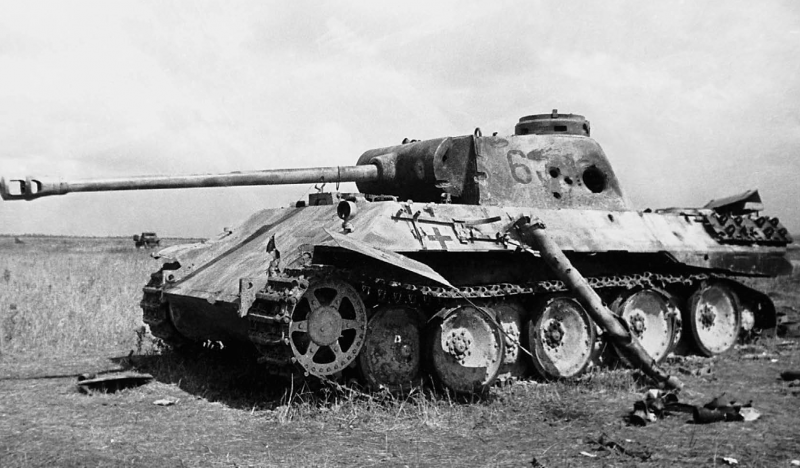The Panther has been called the finest German tank of World War II. Some people have even suggested that it was the best overall tank in that war.
However, the Panther has become the subject of a mythology out of all proportion to its actual effectiveness as a weapon of war. Let’s try to cut through the hype to assess how good this iconic German tank really was.
Design
The designing of a medium tank to replace both the Panzer III and IV began in 1938. However, German military successes in 1940 led to the project being put on hold – after all, if Germany was winning so easily with existing tanks, what was the point in spending time and resources on producing a completely new model?
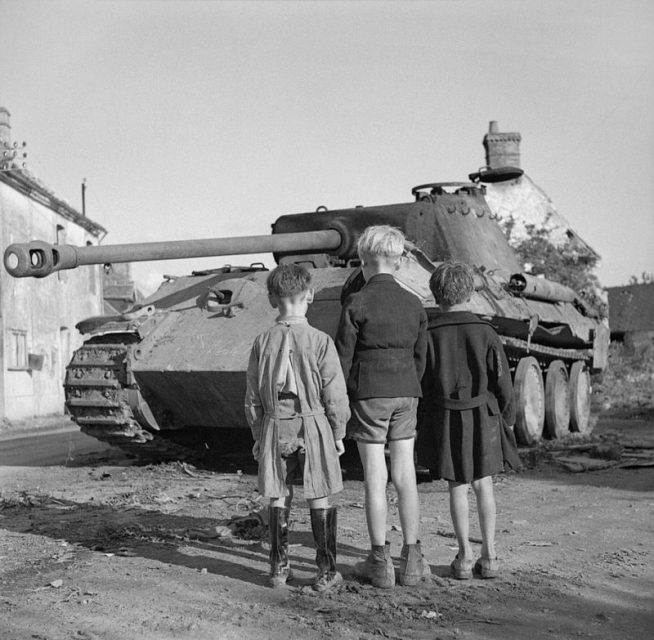
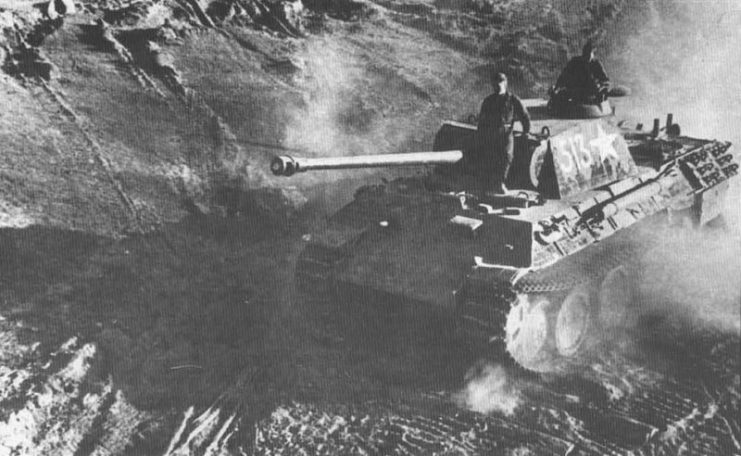
That complacency was shattered in mid-1941 when Germany invaded the Soviet Union and encountered the T-34 for the first time.
Suddenly, the Wehrmacht was in urgent need of a medium tank with good mobility, armor, and firepower. A completely new design was started, taking into account lessons learned from studying the T-34.
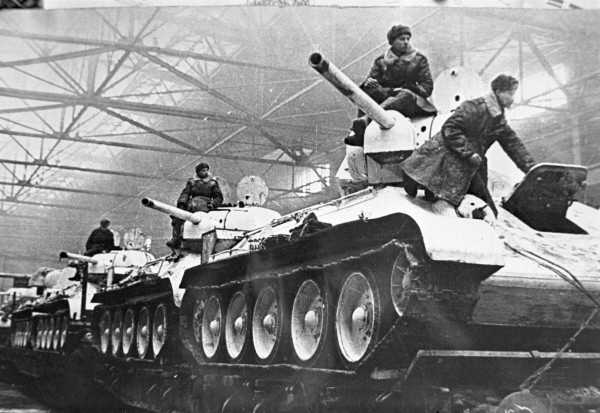
Daimler-Benz (DB) and Maschinenfabrik Augsburg-Nürnberg AG (MAN) both submitted designs for the new tank in January 1942.
The DB design featured sloping armor, a diesel engine and a forward turret, very like the T-34. The MAN design also featured sloping armor, but had a more conventional mid-mounted turret and a gasoline engine.
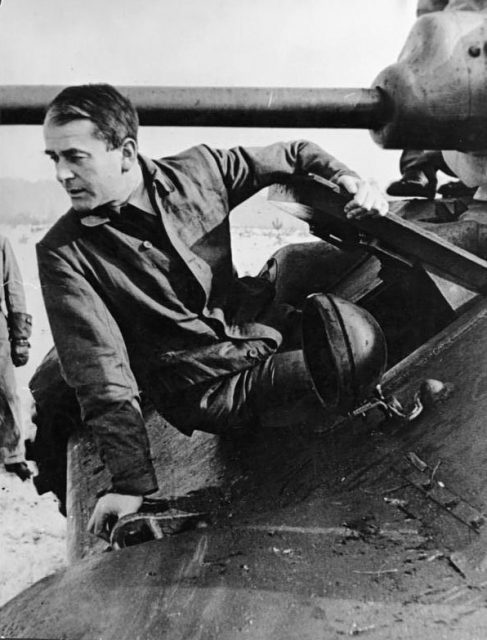
Hitler apparently favored the DB design. However, there was an urgent need to get the new tank into production and the MAN design included a turret which had already been designed by Rheinmetall-Borsig.
The design and creation of a completely new turret for the DB design would inevitably have taken longer, so in May 1942 the MAN design was approved for production.
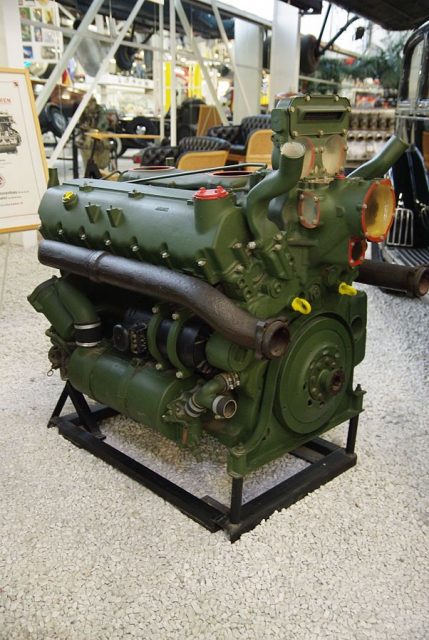
The MAN design featured sloping frontal armor and a Maybach V12 gasoline engine driving the front sprockets. Suspension was provided by torsion-bar axles.
In order to fit eight axles to each side, the tank’s sixteen rubber-rimmed steel road wheels on each side were interleaved. This resulted in uniform weight distribution and low ground pressure.
This system, called schachtellaufwerk, had been used previously on a number of German half-track vehicles, and a very similar design had been developed for the Tiger tank which was also about to enter production.
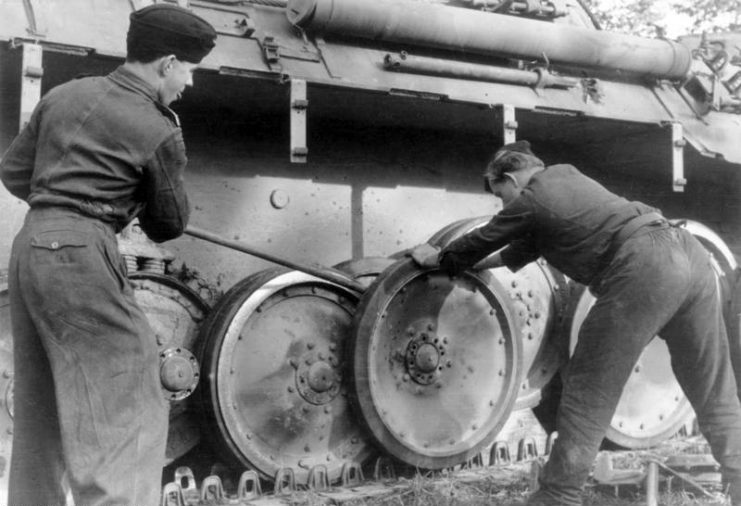
The three-man, hydraulically traversed turret on the MAN design held a 7.5 cm Kampfwagenkanone (KwK) 42 L/70 main gun, a weapon which had originally been intended for the Tiger tank before that was redesigned for the 8.8cm KwK 36.
This gun was primarily designed as a tank killer: it had a very high muzzle velocity and was capable of penetrating 150mm (almost six inches) of armor at a range of one kilometer (o.6 miles). The effective range of this weapon was up to one mile and it was provided with a Turmzielfernrohr 12 binocular gun sight.
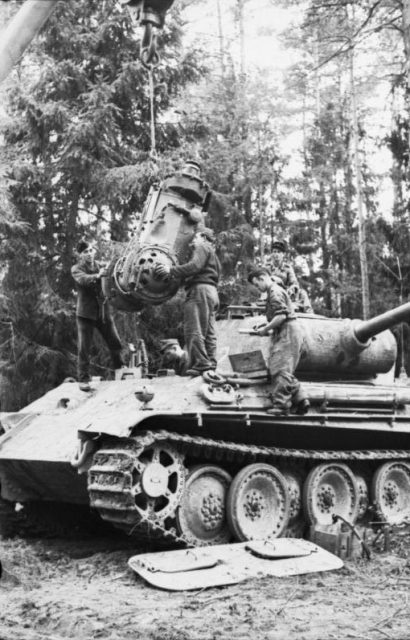
The new tank was intended to be faster and more maneuverable than the Tiger, and its name was chosen to reflect this greater agility. However, Hitler, as he so often did, began to interfere almost as soon as the design was approved for series production.
Among other things, he insisted that the frontal armor thickness be increased. This led to the final design being significantly heavier than originally intended – the initial design was for a 30-35 ton tank, but production Panthers were closer to 50 tons, the original design weight of the Tiger.
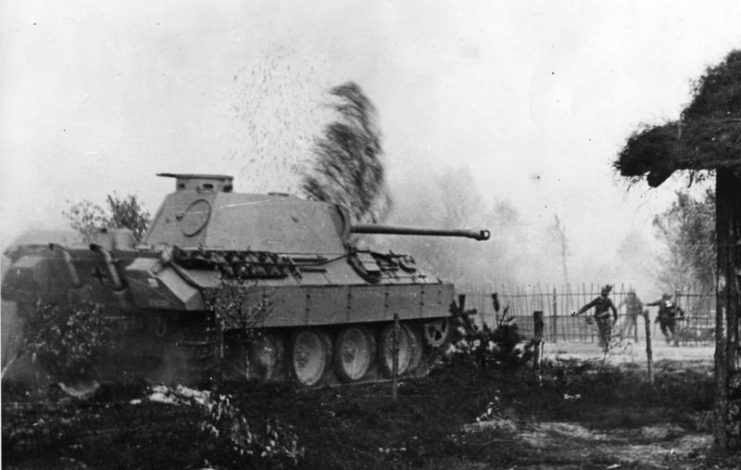
The Panther was designed for a five-man crew: driver, radio operator/bow machine gunner, loader, gunner and commander. The turret was provided with a basket, a base which revolved with it. It was rather cramped – the loader in particular was forced to crouch awkwardly.
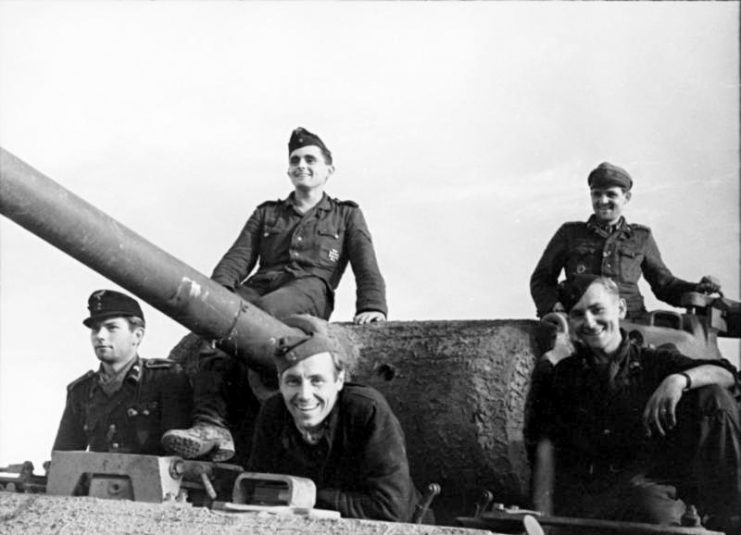
Production
During 1942, the German need for a new tank became even more pressing. The advance towards the Caucasus Mountains had bogged down and by the end of the year it was becoming apparent that the German Sixth Army, which was trapped in Stalingrad, was in dire trouble.
Plans were already being made for a massive new offensive in the summer of 1943 and it was imperative that the new tank be available by then.
Panther production began in December 1942 at the main MAN plant at Nuremberg and at other locations. That represents a stunning achievement – just seven months from design approval to the first tanks being assembled on the production line.
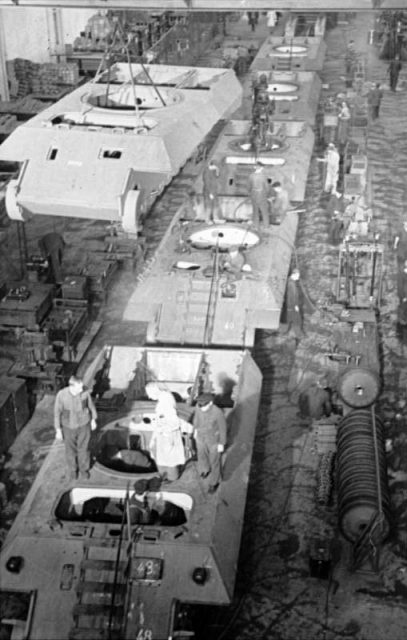
Like most German tanks of WWII, the different models of the Panther were identified by an Ausfuehrung (Version) letter.
Typically, the first version of any new tank was identified as Ausf. A, but the first production version of the Panther was, for some reason, identified as the Ausf. D. The first examples of this version left the MAN production line in January 1943, and around nine hundred were produced.
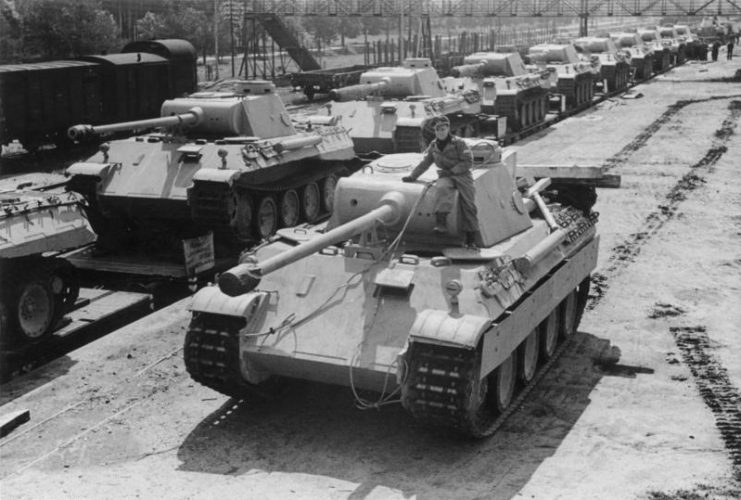
By August 1943, an improved model of the Panther was in production, designated the Ausf. A. This included a number of detail changes to the turret and increased armor thickness in various areas. Some late Ausf. D models and all Ausf. A models were also equipped with an improved Maybach engine, increasing power from 650 to 700 metric horsepower.
Production of the Ausf. A continued to May 1944, and a total of just over 2,000 were delivered.
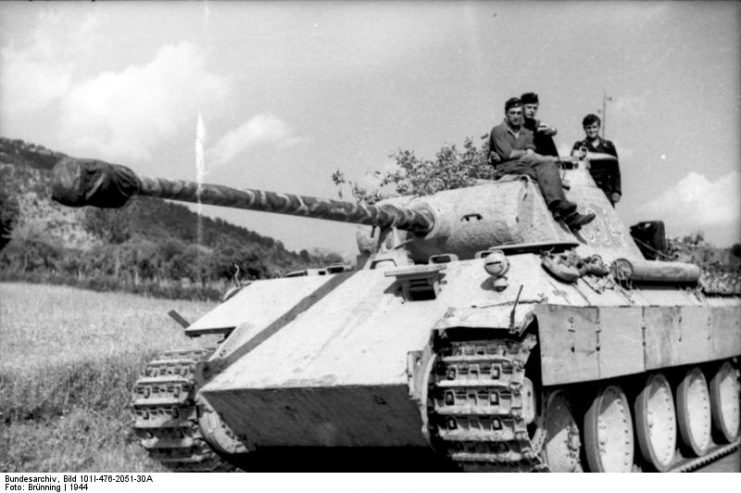
The final version of the Panther was the Ausf. G which began to be produced in March 1944. This version introduced a number of detail changes as well as a new chassis with a different distribution of armor.
The side pannier armor which protected the top of the tracks was increased in thickness and, to avoid increasing the overall weight of the tank, armor in other areas such as the forward front plates and the belly armor was reduced.
Production of this version continued to the end of the war and around 3,000 were produced in total.
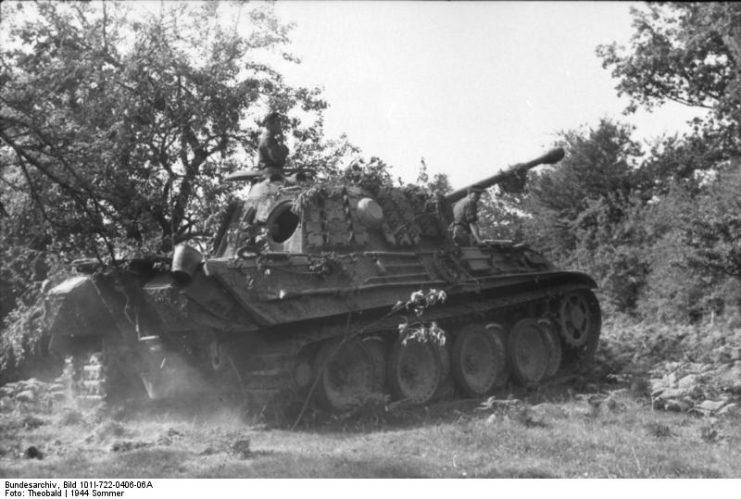
The Best Tank of WWII?
Like any weapon system, the design of the Panther was an attempt to balance combat requirements with practical considerations.
The KwK 42 main gun, for example, was one of the most effective anti-armor weapons carried by any tank in WWII. But it also had significant drawbacks. Its length of over fifteen feet (five meters), for example, made it unwieldy in street fighting and in difficult terrain such as the Bockage of Normandy.
A very high muzzle velocity made the KwK 42 gun a potent tank killer, but this also meant that shells had to be specially reinforced.
This wasn’t an issue with armor-piercing shells, but it severely limited the volume of explosive in HE shells. This made the Panther significantly less capable as an anti-infantry weapon or against reinforced positions.
The muzzle blast from its main gun was also severe and likely to produce concussive injuries in any friendly infantry close to the tank when it was fired.
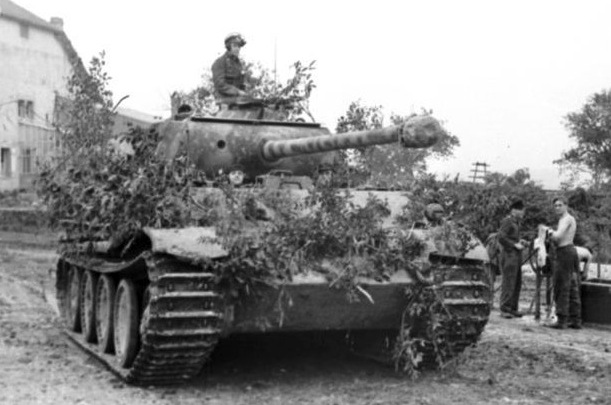
The weakness of the Panther in the infantry support role meant that large numbers of the Panzer III and IV which it was intended to replace still had to be produced.
Also, since the KwK 42 had to use a shell that was entirely different from any other 75mm shell used by German forces, difficult logistics were made even more complicated.
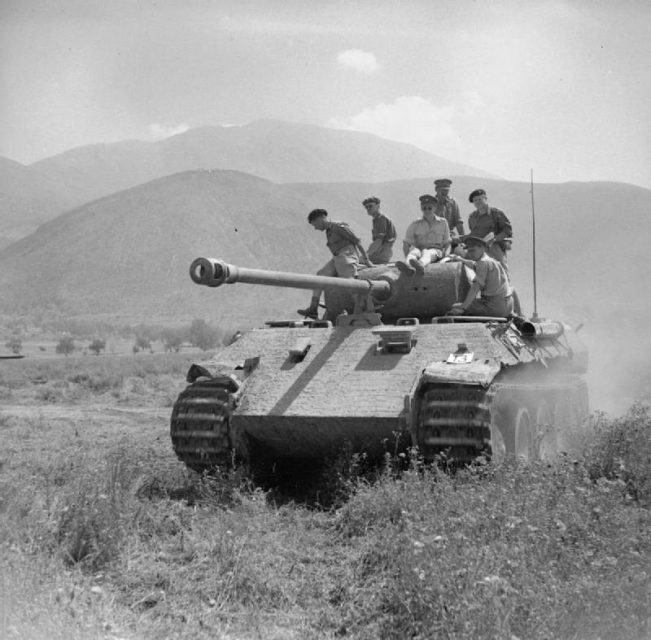
Even as an anti-tank weapon, the main gun on the Panther had a fundamental flaw. The gunner was equipped only with a telescopic binocular sight. This was very effective once the target had been located, but initial location was an issue.
On most Allied and Soviet tanks of the period, the gunner was provided with two sights – a panoramic sight and a telescopic sight.
This was important during handover from the commander, whose role it was to identify targets, to the gunner, whose role was to find and engage those targets.
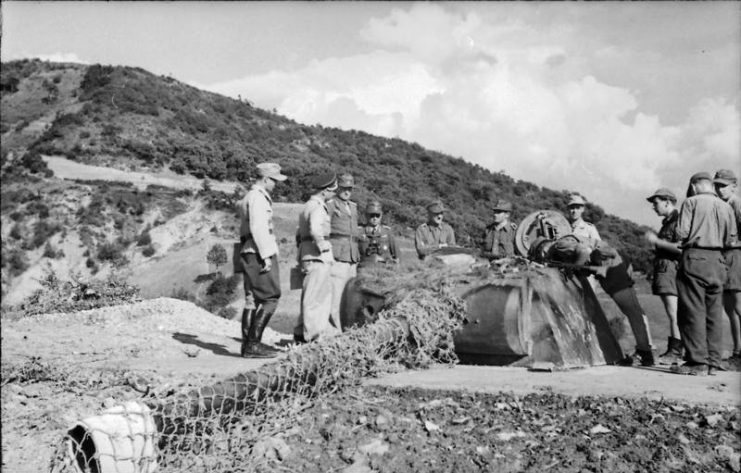
In the Panther, it took time for the gunner, using only a high magnification sight, to find the target handed off by the commander. In any tank-versus-tank situation, getting the first shot off is critical. This issue was never fully addressed in the Panther.
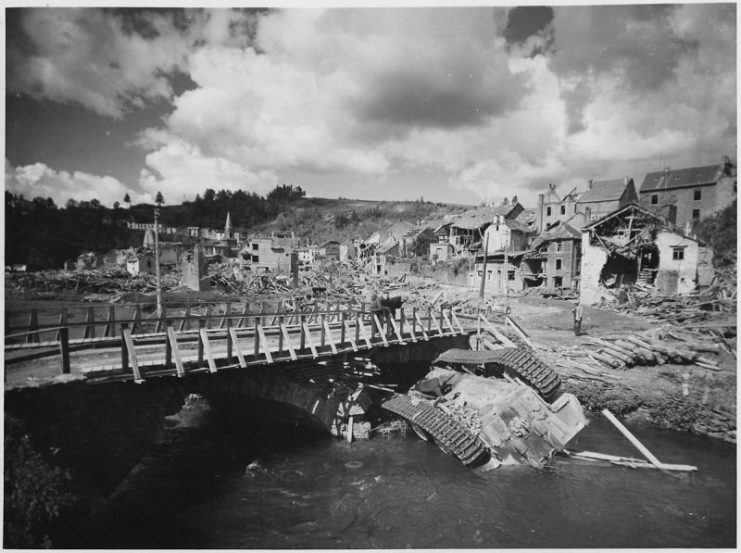
The Panther’s weight was also a problem. It couldn’t use some bridges, and special railroad wagons were required for rail transport.
Its torsion bar suspension and multiple road wheels gave it smooth cross-country performance, but the interleaved road wheels were prone to becoming clogged with mud and debris and even completely freezing up in harsh Russian winters.
The interleaved design also meant that changing a damaged wheel was a major headache. If an inner wheel was damaged, several outer wheels might have to be removed before it could be replaced.
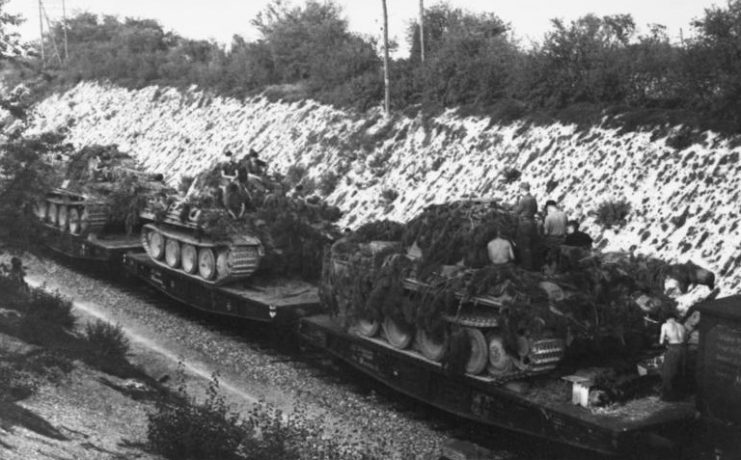
The Panther’s armor was less than perfect. The face-hardened steel had a tendency to spall lethal splinters into the interior of the tank even if it wasn’t penetrated.
On the Ausf. D, the gun mantlet created a shot trap which deflected shots down into the thin armor above the driver/radio operator compartment, often with fatal consequences.
Belly armor on early models was thin, around 16mm (0.6 inches), making the Panther particularly vulnerable to anti-tank mines.
Side armor on early versions was also thin, around 40mm (1.5 inches), and hits to the side led to many Panthers being lost to catastrophic fires.
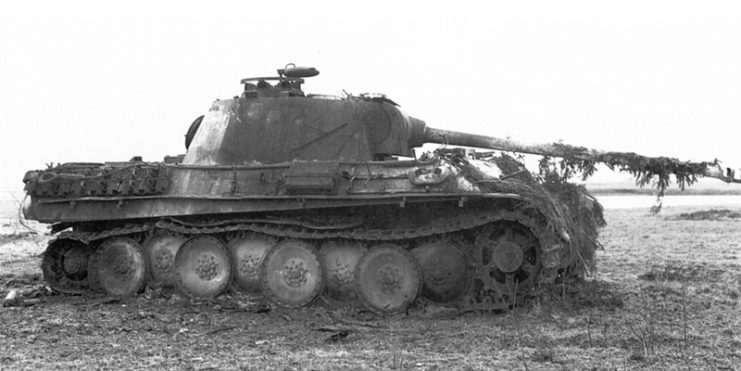
The Panther’s greatest flaw was its poor reliability. Partly this was a production issue – early models were rushed into service, and later models were hampered by a lack of high-grade steel and the Allied bombing of production facilities.
However, poor reliability of the engine and final drive were also due to design changes. The engine and drive train were originally designed for a tank of 30-35 tons. The production Panther was more than 30% heavier and as a consequence these components proved fragile in use.
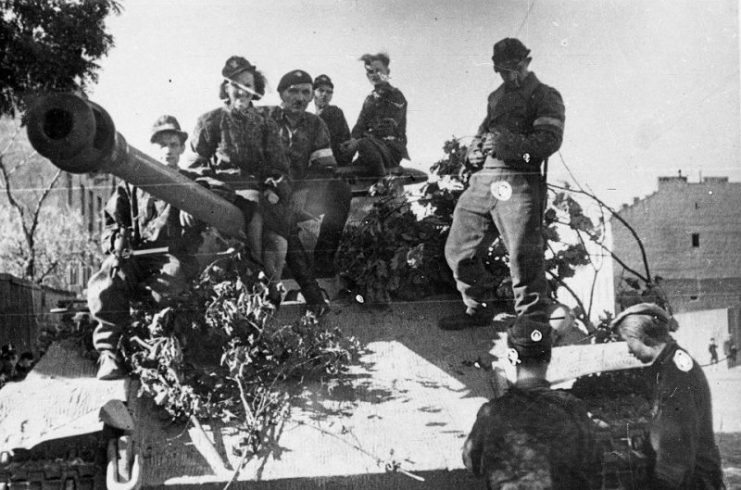
Panther engines suffered from high fuel consumption and the engine compartment was sealed since the Panther was originally intended to be amphibious. That led to catastrophic overheating and fires. Engines were also prone to blowing head gaskets and to bearing and rod failures.
In post-war tests, Panthers were found to need repair or replacement of the final drive in an average of just 150 km (93 miles) – less than the range of a single tank of fuel.
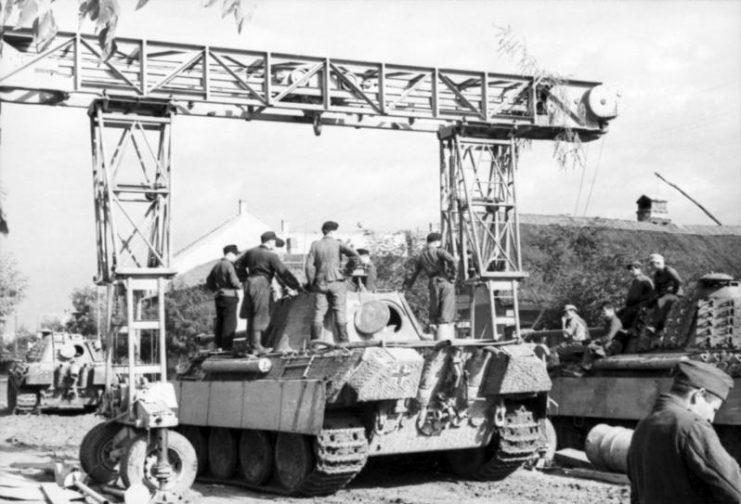
Many units found it difficult to keep more than 50% of their Panthers serviceable. The Ausf. D Panthers rushed into service for the Battle of Kursk had an average serviceability of just 16% in July 1943. This was improved to 37% by the end of that year.
Any planned journey of 25 km (over 15 miles) or more was undertaken by rail if at all possible to avoid the risk of breakdowns. Reliability of the Panther did improve as the war progressed, but it was never impressive.
When a batch of new Ausf. A Panthers were delivered to SS-Leibstandarte in Italy in September 1943, all were rejected as having serious faults which made them unsuitable for combat. General Heinz Guderian reported that 60-70% of early Panthers deployed on the Eastern Front were lost due to mechanical failures rather than to enemy action.
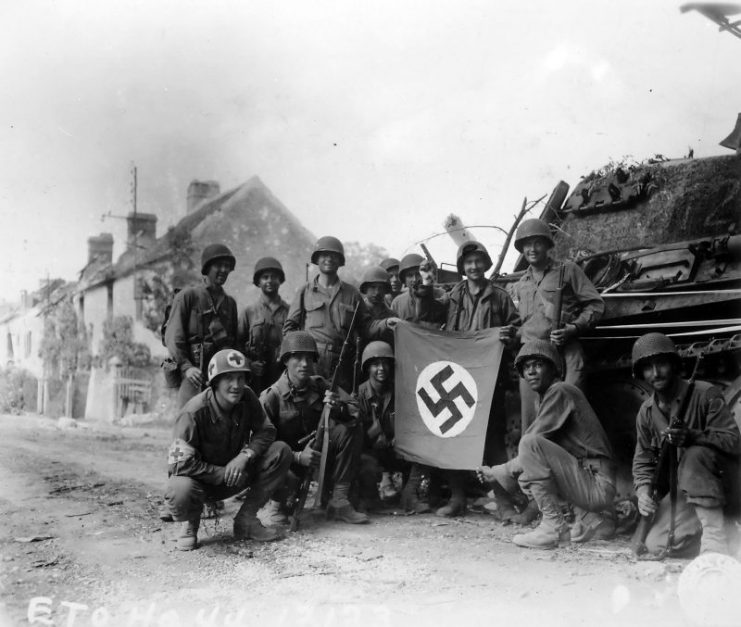
The Panther was also prone to fires. On early models, the fuel pumps, carburetors, and fuel lines were prone to leakage which led to gasoline pooling in the engine compartment. Driving up a slope could cause this to slosh onto hot engine parts and catch fire.
When tanks were being gathered for the Battle of Kursk in July 1943, two Panthers were destroyed by fire while they were being unloaded from railroad wagons – not an auspicious start for any new combat system!
The risk of fire during combat was even higher and more Panthers were destroyed by fires than the American Sherman, which is often identified as a tank which was particularly vulnerable to fire.
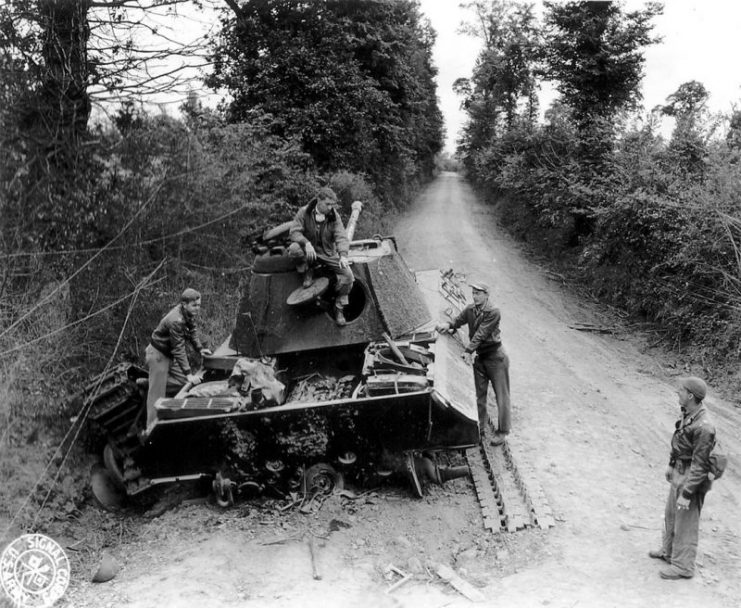
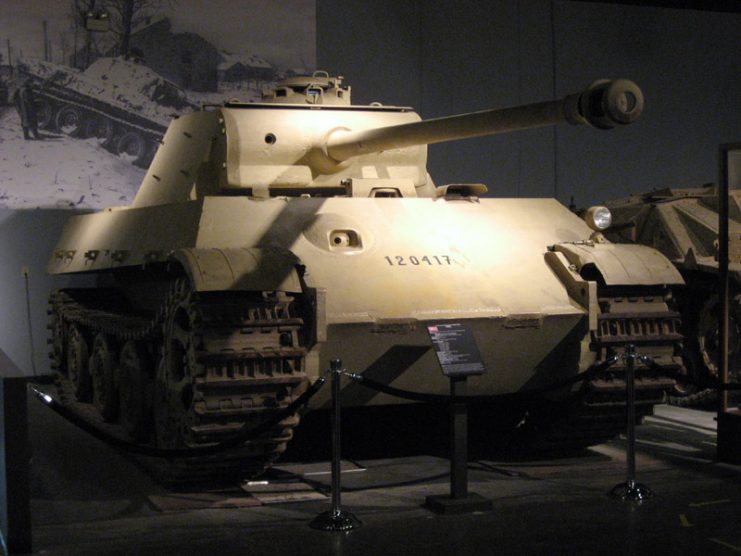
Read another story from us: The Formidable Panzer V “Panther” with 25 Photos
Overall, when fully operational a Panther was a formidable anti-armor weapon. However, hasty early production and changes to the basic design meant that Panthers were often inoperable for a number of reasons.
If we add to this the Panther’s unsuitability as an infantry support weapon and its other flaws, it is very difficult indeed to nominate this as the all-around best tank of World War II.
